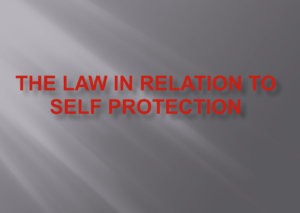Protecting the Frontline Course 7 (diary entry)
- jamie03066
- Mar 24, 2022
- 2 min read
23.03.2022 Today we move

d onto the law section of my Defending the Frontline course for teacher client of Drum Kempo Ju Jitsu. When it comes to teaching self-defence, it is a disservice not to address the legal side with a degree of rigour. After all, the term self-defence is defined by law and any time it might be claimed it is subject to judicial procedures. Perhaps law enforcement officers will be able to immediately determine at the time of an incident or, if the matter goes further and either other involved parties and/or said officers decide to press charges, the matter will be decided by a judge and a jury. When teaching the legal side we best prepare our students and empower them with knowledge. Choosing to ignore this part of training or to put over the appeals to extremes or black and white logical fallacies such as "The law doesn't matter when you are fighting for your life" or "I would rather be tried by 12 than carried by six", aren't helpful. Neither is a disproportionate belief in regular miscarriages of justice perpetrated by cherry picking tabloid media and confirmation biases. I speak only from an English/Welsh law perspective - and I am by no means an expert here - but just about everywhere I have taught internationally or to knowledgeable clients from foreign lands, there are very robust systems set up to establish what the law recognises as self-defence. During our lesson we began with common law. This is a succinct way to lay out the foundation for a self-defence case. Common law dictates that a person legally defending themselves must meet the criteria of having an honestly held belief at the time of an incident that they or someone was in imminent danger and they only used reasonable and necessary force. We then looked into defining an honestly held belief, what constitutes necessary and reasonable force via quotes from legally documented case studies. There are direct quotes from cases, now a part of common law, that demonstrate the law's understanding individuals are not expected to be able to measure proportionate force to a nicety in a stressful situation and when pre-emptive strikes were permissible. I also discussed extreme examples where self-defence was applied and not applied, demonstrating how it stacked up in a legal sense. We looked at the Criminal Law Act, the Criminal Justice and Immigration Act which underline this teaching. My client also discussed some hard skills training and we went back over incidental combinations as well as the use of continuous pressure as a unique principle for self-defence training. UK Self Defence LawUnderstanding Reasonable Force https://clubbchimera.com/services/













Comments